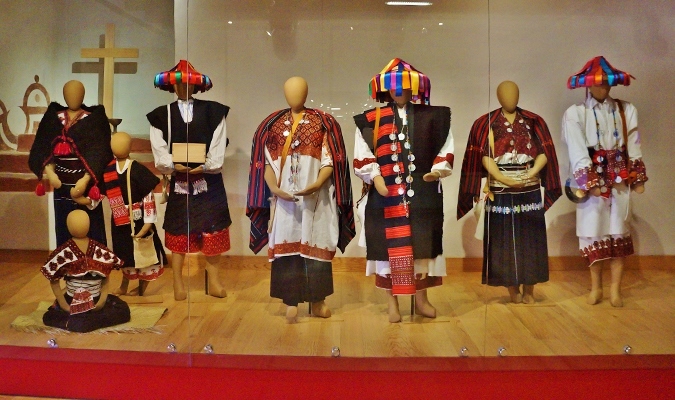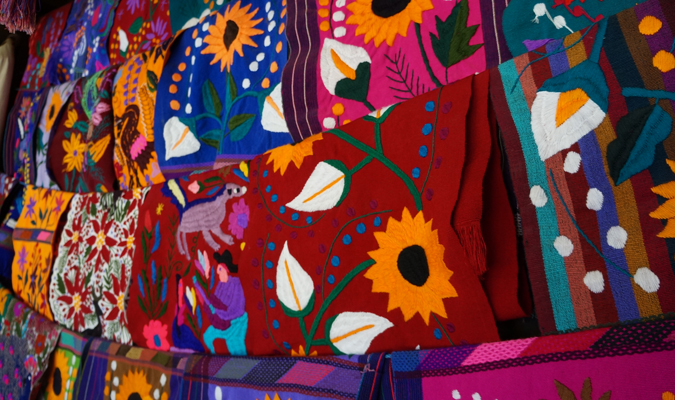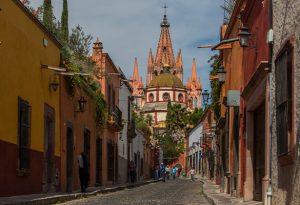One of the highlights of San Cristobal de las Casas, Chiapas is the shopping. Delicately woven and colorful hand-crafted textiles patterned with flowers, geometrical shapes, and indigenous symbols radiate from the market, but what many buyers don’t understand is what makes them so special to Chiapas and how it represents the culture today.
Right next to the market, in the Convento Santo Domingo church, is the Centro de Textiles del Mundo Maya (Mayan World Textile Museum) which lends itself to an incredible history and insight to the significance of all the fabrics for sale that you can find right outside its doors. It recently has been renovated extensively by Formento Cultural Banamex Collection to include Guatemalan and other Mayan textiles and features a beautiful array of textile pieces from different Maya eras.
Textiles, including daily clothing, are the most powerful forms of artistic expression in modern day Maya communities. Thanks to the dedication and persistence of generations of women weavers who have passed their knowledge to their daughters and granddaughters for over a thousand years, this art form continues to exist. Like many cultural forms of expression, Mayan clothing has undergone changes due to elements such as the introduction of foreign material, technology, politics, and synthetic fibers. The first dramatic change occurred in the 16th century when pre-Hispanic culture was influenced by the Spanish conquest and power of the Catholic Church. Still allowing to preserve the foundation of the Mayan culture, they adapted their textiles.
Now, in the 21st century across the Mayan region, the use of traditional apparel is a symbol of conviction. It is a way that the Mayans from different communities identify themselves and their people. The use of different patterns and technique is a proclamation of being Maya. The museum includes typical garmets of Mayan settlements including Tojolabales, Choles, Tzeltales, Tzotziles (Chiapas); and Quiches, Ixchiles, Cakchiqueles, Mames, Kekchis (Guatemala).







